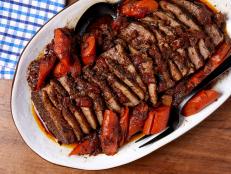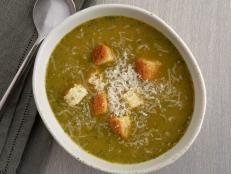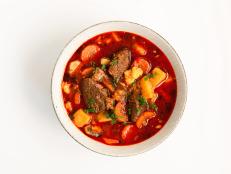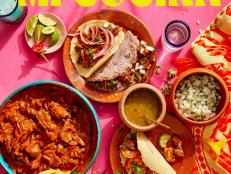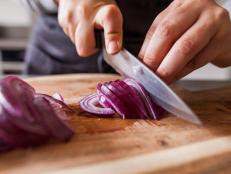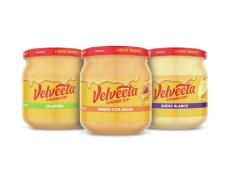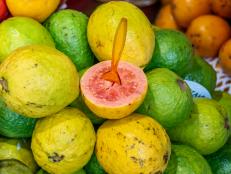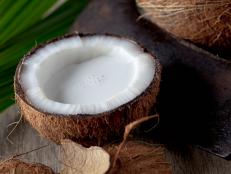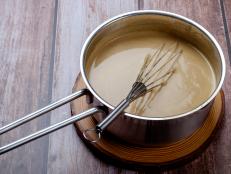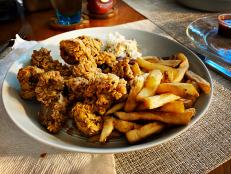Jewish Cooking
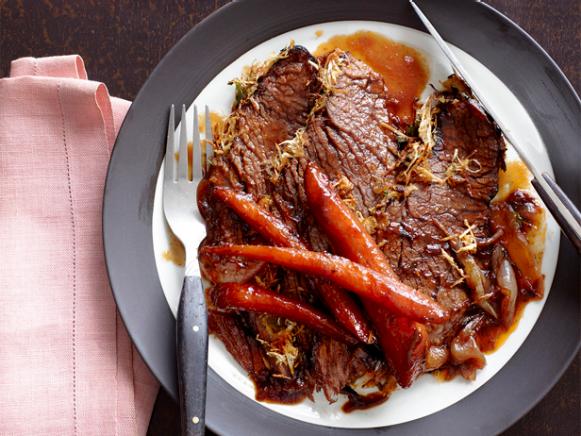
Con Poulous, 2010, All Rights Reserved.
Jewish cooking is "food with a story" — a story that spans the globe, from the Middle East and Africa to Eastern Europe, across the Mediterranean and far beyond, with tastes and aromas unique to each region. Wherever one finds Jewish cooking one finds the history of a people preserved and passed down in dishes around a family table. It is cooking rich in history and symbolism. Yet, as deeply rooted in tradition as Jewish cooking is, it has always been open to new influences and inspirations. So, if you haven't written down Grandma's recipe for stuffed cabbage or Aunt Becky's brisket, do not worry: Modern twists on traditional favorites are what keep Jewish cooking alive and vibrant.
Kosher, Simply Stated
Fundamentally, all traditional Jewish cooking is kosher. While there are varying levels of observance, the dietary rules that determine whether food meets the standards of being fit for use according to Jewish law remain the same. Kosher laws are observed year round, with additional considerations during Passover.
While the details of keeping kosher may seem complicated, the basic principles are fairly simple:
- Meat must come from an animal that has "cloven hooves and chews its cud." This means cattle, sheep, goats, deer and bison are kosher; pigs and rabbits are not. Chicken, ducks, turkey and other poultry are acceptable under kosher law. When buying meat or poultry, purchase products that have been certified as kosher or are from a kosher butcher.
- Fish must have scales that can be easily removed to be considered kosher. Salmon, trout, cod, bass, snapper, tuna, carp and herring are among those permitted; catfish, swordfish and sturgeon are not. All shellfish are forbidden.
- Fruits and vegetables are kosher.
- Dairy may not be cooked with or served at the same meal as either meat or poultry.
- Fish, eggs, grains, fruits and vegetables are considered "neutral" foods and thus allowed in meat or dairy meals.
- Utensils used for cooking and eating meat should not touch dairy and vice versa.

In the supermarket, kosher foods can be identified by the many trademarked symbols of kosher certification. The most widespread of these are the "U" of the Union of Orthodox Jewish Congregations and the "K" within a circle issued by the Organized Kashrus Laboratories. The term "Glatt Kosher" is used to indicate meat processed to exceptionally high kosher standards. Foods labeled "pareve" or "parve" have neither meat nor dairy products and thus are considered neutral, permissible with both meat and dairy meals.
During Passover, kosher laws are more stringent: Ovens must be thoroughly cleaned and subjected to very high heat, and pantries are to be cleansed of any food made with leavened grain. All food must be prepared, served and consumed with cookware and tableware reserved solely for the holiday. When shopping for Passover, look for packages containing the phrase "Kosher for Passover" or the symbol "P" to ensure items were prepared specifically for the holiday under rabbinical supervision.
The nuances of kosher observance can be challenging to sift through, and it is a good idea to consult an authority for a full understanding of whether a food is kosher or "treif."
Jewish Geography
Region of origin plays an important role in what is considered customary for everyday Jewish cooking and holiday celebrations. Whether food is smothered in onions and sprinkled with paprika, or flavored with lemon, garlic and mint, is a reflection of the ancestry of the host or hostess.
Ashkenazic Jewish Cooking (Central and Eastern European)
Sautéed onions, sweet and sour sauces, chicken noodle soup and braised beef brisket are typical of this region. Simple seasoning and minimal use of herbs and spices create dishes that are sometimes delicate, but never bland. Potatoes appear in many forms: cooked with meat, fried as pancakes, baked in kugels (casseroles). Challah is the bread of choice, and luscious strudels, creamy cheesecakes, honey cakes, babka and blintzes satisfy the sweet tooth.

Tara Donne
Sephardic Jewish Cooking (Mediterranean)
Sephardic cooking, in the term's current use, broadly encompasses the worlds of Judeo-Arab (Middle Eastern), Judeo-Spanish (Iberian) and North African Jewish cooking. These diverse styles share much in common. Cumin, coriander and cinnamon are the seasoning stars. Rice and chickpeas are staples. Dishes are pungent and aromatic, heady with garlic, herbs, lemon and pomegranate. Lamb is the meat of choice, frequently stewed in tomato-based sauces. Artichokes, eggplants, spinach, okra, olives and peppers accompany the meal, often in the form of olive oil-drenched salads. In households with origins in the eastern Mediterranean, pita bread and tahini-based spreads are common, and bulgur and lentils are additional pantry staples. Desserts are based on pistachio and pine nuts, honey and filo dough.
Holiday Celebrations with Meaning
The story behind the food truly comes alive during holiday celebrations. While chicken soup and gefilte fish make repeat appearances among Ashkenazim, each holiday is distinguished by foods and dishes that mark the season and are deeply imbued with symbolism.
Passover – The Springtime Feast
Passover celebrates the ancient Jews' deliverance from slavery in Egypt. On the first two nights of the holiday, a festive meal known as a Seder is held. This meal is rich in edible symbols, including matzoh (a cracker-like, unleavened flatbread) eaten in remembrance of the hasty escape from Egypt. It is yummy when topped with haroset, a pasty mixture of chopped apples and/or dates, nuts, honey and sweet wine, which represents the mortar used by Hebrew slaves to build the pyramids of Egypt.
Gefilte fish, symbolic of abundance since fish multiply rapidly, leads as the appetizer. It is usually served with horseradish, a bitter "herb" representing the affliction of slavery. Matzoh ball soup is the traditional soup. Roast chicken, braised lamb shanks or pot-roasted brisket typically make up the main dish. Macaroons, flourless chocolate cake, almond-flour gâteau and sponge cakes provide for a wonderfully sweet ending.
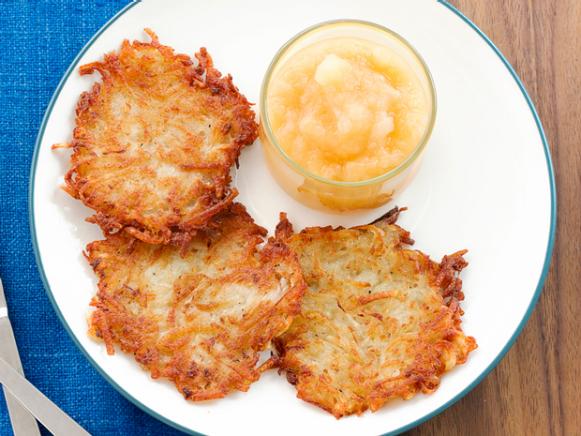
Hanukkah – The Festival of Lights
Hanukkah, a holiday commemorating deliverance from religious oppression and the rededication of the Holy Temple in Jerusalem, is a favorite festival among children of all ages, even the adult kind. Deep- or shallow-fried dishes like jelly doughnuts and potato latkes abound. These dishes serve as a delicious reminder of the "miracle of the oil" at the heart of the Hanukkah story, when a single day's worth of oil miraculously kept the Temple flame alight for a full eight days. The party atmosphere is enhanced with the serving of appetizers, dips and salads, which are enjoyed while children spin the dreidel for "gelt" — chocolate coins wrapped in gold foil.
Rosh Hashana – A Sweet New Year
Rosh Hashana, the celebration of the Jewish New Year, occurs in autumn and lasts for two days. Chopped liver with onions on crackers is a popular hors d'oeuvres. Apples dipped in honey are eaten to bring in a "sweet new year," and dessert usually includes honey cake. Challah bread is baked into rounds to symbolize the circle of life. Beets make a strong showing in the form of horseradish-beet condiment, borscht soup (if your Russian grandmother has any say) or simply roasted. Chicken soup, this time with kreplach (meat-filled dumplings), is a favorite. In keeping with the themes of sweetness and bounty, tzimmes, a sweet vegetable stew, is a side dish. Brisket, veal breast or roasted chicken headline the meal. Stuffed cabbage recipes are handed down from generation to generation, with varying views on just how sweet (or sour) it should be.
The fun and challenge of Jewish cooking is in finding ways to marry traditional recipes with new approaches. No doubt someone at the table will ask, "Where did you get this recipe?"

























